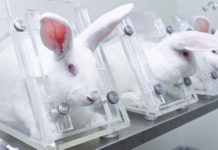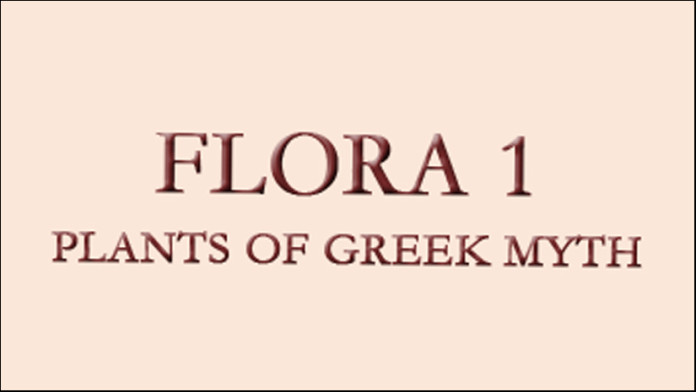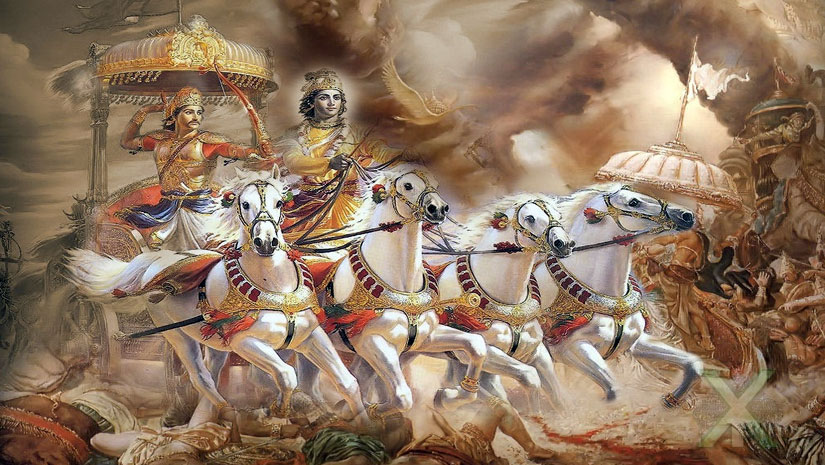Ancient Greeks were rich in mythology and heritage. So were the myths of the plants and flowers of ancient Greece – ranging from the tale of Persephone and the pomegranate seeds, to the flowery metamorphoses of Hyakinthos, the golden apples of the Hesperides, and the tree-morphing nymph Daphne.
We bring you the myths surrounding these plants and how they looked.
1.Aconite:
 Herbaceous perennial plant with purplish-blue flowers, grows up to a meter with toxic leaves and roots which were used by the ancients as a poison. The Greek’s called it akoniton (without dirt) because it grows on rocky ground, and lykoktonon (wolf-slaying) because it was traditionally applied by their arrows when hunting wolves.
Herbaceous perennial plant with purplish-blue flowers, grows up to a meter with toxic leaves and roots which were used by the ancients as a poison. The Greek’s called it akoniton (without dirt) because it grows on rocky ground, and lykoktonon (wolf-slaying) because it was traditionally applied by their arrows when hunting wolves.
2.Almond Tree:
 A small deciduous tree growing up to 4-9 meters in height. The mythology associated with this tree is that in Phrygia there was born an hermaphroditic deity named Agdistis. The gods were fearful and castrated it creating the goddess Kybele. The genitals were cast upon the earth where they sprouted and grew into an almond tree. Once when the nymph Nana was sitting beneath its branches a nut fell into her lap and impregnated her. The child conceived was Attis, who grew up to became the consort of the Kybele.
A small deciduous tree growing up to 4-9 meters in height. The mythology associated with this tree is that in Phrygia there was born an hermaphroditic deity named Agdistis. The gods were fearful and castrated it creating the goddess Kybele. The genitals were cast upon the earth where they sprouted and grew into an almond tree. Once when the nymph Nana was sitting beneath its branches a nut fell into her lap and impregnated her. The child conceived was Attis, who grew up to became the consort of the Kybele.
3.Anemone, Poppy or Windflower:
 A perennial spring-flowering bulb with delicate blood-red flowers. The myth associated is that Adonis was a handsome youth loved by the goddess Aphrodite. When he was slain by a wild boar, the goddess created the red anemone flower from his blood.
A perennial spring-flowering bulb with delicate blood-red flowers. The myth associated is that Adonis was a handsome youth loved by the goddess Aphrodite. When he was slain by a wild boar, the goddess created the red anemone flower from his blood.
4.Apple Tree:
 Apple tree was very sacred to ancient Greeks. It was associated with love and marriage. It is sacred to Hera and Aphrodite. The earth-goddess Gaia produced first apple-tree as a wedding-present for the goddess Hera. This tree of the golden apples was guarded by the three goddess Hesperides.
Apple tree was very sacred to ancient Greeks. It was associated with love and marriage. It is sacred to Hera and Aphrodite. The earth-goddess Gaia produced first apple-tree as a wedding-present for the goddess Hera. This tree of the golden apples was guarded by the three goddess Hesperides.
5.Barley:
 Barley is considered to be very important crop next only to wheat and is sacred ot Demeter. When Demeter was searching for Persephone, she stopped to rest at a farmer’s cottage and quenched her thirst with a sweet barley-drink. A boy name Askalabos mocked her hunger and in anger the goddess cast the drink upon him, transforming him into a lizard. The flecks of barley became the creature’s spots.
Barley is considered to be very important crop next only to wheat and is sacred ot Demeter. When Demeter was searching for Persephone, she stopped to rest at a farmer’s cottage and quenched her thirst with a sweet barley-drink. A boy name Askalabos mocked her hunger and in anger the goddess cast the drink upon him, transforming him into a lizard. The flecks of barley became the creature’s spots.
6.Chaste Tree:
 A small deciduous tree or large shrub with hemp-like leaves and branched clusters of purple flowers. Its stems were used to make wicker items. The plant was believed to calm sexual appetites and was used as a medicine for women. It is associated with Hera – with marital chastity, sacred tree in her Samian temple, Hestia -virgin priestesses carried chaste-tree stems, Artemis – whose Spartan statue bound in withy stems, Demeter matrons strew their beds with flowers of the tree during the Thesmophoria festival.
A small deciduous tree or large shrub with hemp-like leaves and branched clusters of purple flowers. Its stems were used to make wicker items. The plant was believed to calm sexual appetites and was used as a medicine for women. It is associated with Hera – with marital chastity, sacred tree in her Samian temple, Hestia -virgin priestesses carried chaste-tree stems, Artemis – whose Spartan statue bound in withy stems, Demeter matrons strew their beds with flowers of the tree during the Thesmophoria festival.
7.Crocus/ Saffron:
 A boy loved by the god Hermes. After his accidental death the god transformed him into the saffron flower. Its red stems were described as his spilt blood. According to others Krokos was metamorphosed into the flower following the death of his love, the Nymph Smilax.
A boy loved by the god Hermes. After his accidental death the god transformed him into the saffron flower. Its red stems were described as his spilt blood. According to others Krokos was metamorphosed into the flower following the death of his love, the Nymph Smilax.
8.Cypress:
 A young prince of the island of Keos loved by the god Apollon. When he killed himself following the death of his beloved pet stag the god transformed him into the cypress tree.
A young prince of the island of Keos loved by the god Apollon. When he killed himself following the death of his beloved pet stag the god transformed him into the cypress tree.
9.Fig Tree:
 An important orchard tree in ancient Greece. Figs were eaten fresh and dried for out of season consumption. The myth associated is that One of the Titans, who fled from Zeus and was transformed by his mother Gaia into a fig-tree.
An important orchard tree in ancient Greece. Figs were eaten fresh and dried for out of season consumption. The myth associated is that One of the Titans, who fled from Zeus and was transformed by his mother Gaia into a fig-tree.
10.Silver Fir:
 Attis was a handsome youth loved by the goddess Kybele. However when she discovered that he had been unfaithful, she forced him to castrate himself and transformed him into a silver fir. The tree was decorated at the centre of her orgiastic rituals, its phallic cone representing the castrated members of her lover.
Attis was a handsome youth loved by the goddess Kybele. However when she discovered that he had been unfaithful, she forced him to castrate himself and transformed him into a silver fir. The tree was decorated at the centre of her orgiastic rituals, its phallic cone representing the castrated members of her lover.
11.Frankincense Tree:
 A Persian princess who was loved by the sun-god Helios. When her father learned of the affair, he buried her beneath the sands. Helios then transformed her body into the frankincense tree.
A Persian princess who was loved by the sun-god Helios. When her father learned of the affair, he buried her beneath the sands. Helios then transformed her body into the frankincense tree.
12.Heliotrope:
 Klytie was a Nymph loved by the sun-god Helios. When he left her for another, she wasted away and was transformed into a sun-gazing heliotrope.
Klytie was a Nymph loved by the sun-god Helios. When he left her for another, she wasted away and was transformed into a sun-gazing heliotrope.
13.Iris:

A spring flowering bulb with purple, blue or mauve blooms. The sweet iris was named by the Greeks after the goddess of the rainbow.
14.Ivy:
 After the birth of Dionysos his jealous stepmother Hera sought to destroy him. So his nurses, the Nymphai Nysiades, screened his crib with ivy-leaves to keep him safely hidden.
After the birth of Dionysos his jealous stepmother Hera sought to destroy him. So his nurses, the Nymphai Nysiades, screened his crib with ivy-leaves to keep him safely hidden.
15.Laurel:

Daphne was an Arkadian Nymphe loved by the god Apollon. When he pursued her, she fled and transformed into a laurel tree to escape him. The plant was ever after sacred to the god.
By:- Archa Dave



























